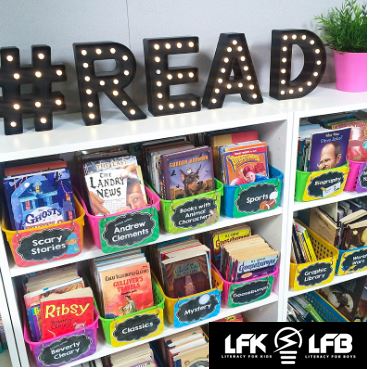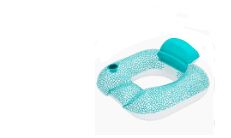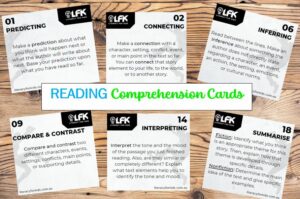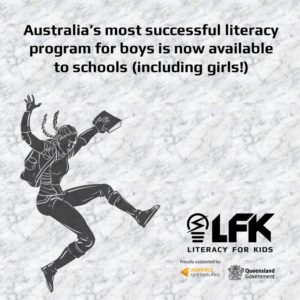Building a classroom library that improves student literacy

Tips for getting the most out of your classroom library
Do you have a classroom library? Maybe you call it a library corner, a book lab or a book nook, but the place you set aside books for your students to grab when there is free time can play a major role in your students’ literacy.
There is strong evidence that teachers who set up classroom libraries provide equitable access to books, which in turn promotes reading achievement and motivation. Just having those books there will increase reading frequency and that will grow into greater reading achievement. If you’re still building your classroom library or looking to tweak it, we’ve got some great ideas. We have a few insights into what makes a good classroom library, plus pulled together tips from teachers like you on how to organize your classroom library and even find books to fill it!
What makes a good classroom library?
Building a classroom library may seem as simple as grabbing a few books from your local Big W/Target or discount store and making them accessible to your students, but let’s consider some ways to make you think about how you can make it better.
A good classroom library is one that is built with all students in mind — from struggling learners to gifted students — and includes diverse stories and characters that represent not just your classroom make-up but the world at large. An effective classroom library is also one that promotes reading at school and at home, so creating a system for students to “check out” or “borrow” books is a must.
The National Council of Teachers of English suggests you consider these three criteria when setting up a class library:
1) Offer a wide range of materials to appeal to and support the needs of students with different interests and abilities.
2) Provide access to multiple resources that reflect diverse perspectives and social identities.
3) Open up opportunities for students, teachers, and school librarians to collaborate on the selections available for student choice and reading.
Where can I find cheap books for a class library?
Books aren’t cheap! If you’re trying to create a good collection that will hit all the different needs of the children in your classroom, it will blow your budget. When I visit schools I ask fellow teachers where they find inexpensive books for their classroom libraries, and here’s what they said:
- Garage sales — Parents cleaning out their kids’ old books may be your very best resource for good books for VERY little money. Speaking of …
- Parents you know whose kids are getting older — If they’ve passed the grade you’re teaching years ago, they may be looking to offload some books!
- Local Mum Facebook groups — Once again, parents!
- Ask other teachers, especially teachers who used to teach different grades — When a teacher goes from second to sixth, often they’re housing books in a garage somewhere “just in case” they get moved back. But they may be willing to share some of the hidden treasure!
- Check with your local library — Are they doing a book sale to raise money? Are they looking to get rid of books that aren’t checked out?
- Teacher Tip – don’t forget books for reluctant readers! Here’s a list showing plenty of books for reluctant readers.
How do I organise my classroom library?
This will ultimately depend upon the number of books, the size of your space, and the age range of your students. We certainly don’t expect teachers to catalogue books but some of these organization tricks may work for you:
- Use Alphabetical Order: Whether you’re organizing by the first letter of the book title or first letter of the author’s last name, adding the letter to the front of your book bin makes it easier for your students to know where to return books and reduces the time you have to spend cleaning up. Well … hopefully!
- Organize by Genre: This is a great idea for books in the upper primary years, especially as you try to hook reluctant readers on similar books to those they’ve enjoyed reading. Try downloading labels that are perfect for organizing a classroom library by genre!
- Colour Code Your Books: Use coloured dots to help your students find the books they need — affixed to the spine, this can be used with matching dots on your book bins. But it is also useful if you line your books up on bookshelves, rather than opting for the popular book bin option.
- Organize in Rainbow Order: Not only will this create a bright and beautiful book nook, it also helps your students know where to put their books when they return them.
- Author box: Have you considered why series books are popular with kids? The number one reason students like series is that it reduces the stress of having to find books to read.
- Audio books: A great resource for reluctant and struggling readers.One teacher has a tablet with an audiobook program loaded so that these students can access books. This teacher has some money set aside to purchase popular books for these readers. Audio support, with the book, is a powerful reading tool – it helps with correct pronunciation in the student’s ear, reinforces decoding and assists vocabulary development.
Decorating your class library
- Set Up Seating — This shared idea about “chairs” is brilliant. Blow up a few inner pool
 tubes, and you’ve got instant seating for your classroom library corner!
tubes, and you’ve got instant seating for your classroom library corner! - Add Posters — This is a fun one to help them get to know and understand the book better.
- Make a Bookmark Station — Encourage your students to save their spot in their books by printing bookmarks and making sure there’s always a steady supply. Print on card so they’re sturdy enough to be used again and again.
We hope that these ideas are useful in your classroom. Think of your classroom library as your co-teacher!
Our literacy programs can also be your co-teacher! With hundreds of kid-centric topics, our programs have been proven to lift literacy in schools and at home. Contact us today.
Our Results
An effective reading program needs to be backed by strong results. Literacy for Boys was independently tested in one of the largest State Primary schools in Qld. Students in Years 3 to 6 improved their reading, spelling and comprehension ages by an average of 12 months after only 18 weeks on our program! Click here for the full report.
Contact us if you’d like to trial Literacy for Boys or Literacy for Kids in your school.
info@literacyforboys.com.au
info@literacyforkids.com.au
Want your students to finish strong in their literacy? Want more from your literacy program? Contact us for a 30-day free trial in your school or classroom. New schools receive these great ‘Turn and Talk’ comprehension cards for their classroom ~

Student Comprehension Cards
Check out our blogs for more ideas and tips.
5 Ways to Build Student Confidence
Identify Comprehension Gaps with these great cards
Steps to Successfully Support Disengaged Learners
See us featured in The Educator Australia magazine
Research confirms that early reading boosts literacy
Boys Love LFB – Here’s what they have to say!
Get boys reading in the digital age
Why write? Tips for reluctant writers
Brought to you by Tanya Grambower


